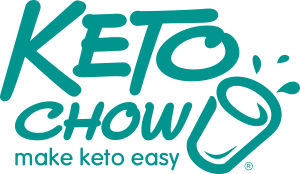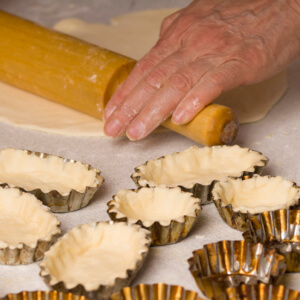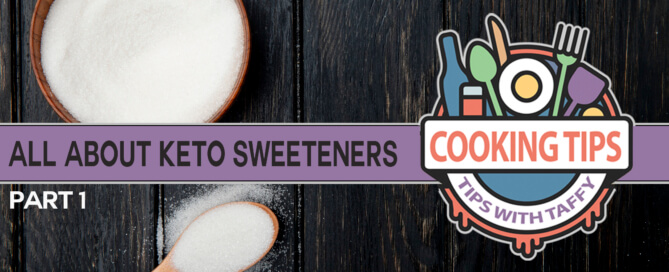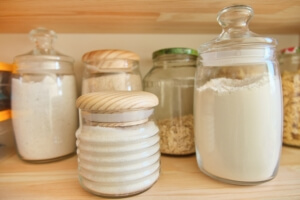Prep Like a Chef for the Holidays
Professional chefs have a secret to getting a lot of work done in a streamlined way: they use a prep list to organize their cooking. The secret to a good prep list is breaking recipes down into small steps, making it easier to pull off a large or small meal with finesse. This makes a huge difference particularly for big holiday meals!
Here are eight steps to prepping like a chef for your own big day.
 1. Make your prep list. Grab some paper and a pen and start by listing every dish on your menu, then break those dishes down into smaller steps that can be grouped together. When you turn the oven on, you can toast nuts and seeds, bake bread for stuffing, and roast vegetables for your stock all in one prepping session. When you work on the stovetop, clarify and brown butter, simmer stock, make cranberry sauce, and blanch vegetables. Chop all the vegetables at the same time, then divide them into portions for each recipe and label them accordingly. Remember to cross items off your list as you finish them.
1. Make your prep list. Grab some paper and a pen and start by listing every dish on your menu, then break those dishes down into smaller steps that can be grouped together. When you turn the oven on, you can toast nuts and seeds, bake bread for stuffing, and roast vegetables for your stock all in one prepping session. When you work on the stovetop, clarify and brown butter, simmer stock, make cranberry sauce, and blanch vegetables. Chop all the vegetables at the same time, then divide them into portions for each recipe and label them accordingly. Remember to cross items off your list as you finish them.
2. Make a grocery list. Use your menu and prep list to make a detailed shopping list. Take note of the total amount you need of each ingredient so you can buy the correct amount and avoid going back to the store at the last minute for missed ingredients. If four recipes call for one cup of heavy cream, you will know you need a quart of heavy cream total. Don’t forget to buy extra if you need it for coffee, and garnishing desserts.
3. Start prepping. If you have time, prep what you can as you unpack your shopping. Place fresh herbs and vegetables like parsley, green onions, and celery in a large pitcher of cold water and cover them loosely with a plastic bag. Wash and dry greens before you put them away so they will be ready to use when you need them. Store cleaned greens, loosely packed and covered in a large container lined with lightly damp cloth. Divide large packages of meats, cheeses, and nuts into smaller portions before storing or freezing.
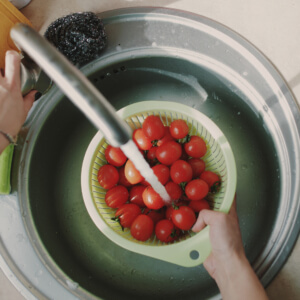 4. Mix dry ingredients in advance. If you have a few recipes for baked goods or other dishes that call for mixing dry ingredients, you can measure, mix, and store them in small containers in advance. Label them with the name of the dish and how much you have in the container. This way, you can pull out all of your Keto Chow flavors, keto flours, and sweeteners at once, then put them all away and avoid fussing with them on the day of the big meal. With most dry ingredients, you can do this up to a week in advance.
4. Mix dry ingredients in advance. If you have a few recipes for baked goods or other dishes that call for mixing dry ingredients, you can measure, mix, and store them in small containers in advance. Label them with the name of the dish and how much you have in the container. This way, you can pull out all of your Keto Chow flavors, keto flours, and sweeteners at once, then put them all away and avoid fussing with them on the day of the big meal. With most dry ingredients, you can do this up to a week in advance.
5. Prep vegetables. Most vegetables can be prepped up to three days before you cook a dish. How many onions do you need for all of your recipes? Chop them all at once. When it’s time to cook, just reach for your prepped vegetables. You can prep all the vegetables for each recipe and store them together or store chopped onions, celery, and garlic separately and measure them as you need them.
6. Bake and cook some items two to three days in advance. For example, make and par-bake pie crusts, or bake keto breads that need to dry before they can be used in stuffing. Make desserts like ice cream that need time in the freezer. Make stocks, compound butters, and cranberry sauce. Toasting nuts and seeds is another step that you can do in advance.
7. Check in and update. Two days before the big day, check your list and make sure you haven’t missed anything. Regroup and double check that you have all the ingredients you need, and that everything looks good. Some ingredients I always check for are butter and heavy cream, as they both seem to go faster than expected.
8. Set up and enjoy the big day. By the day of your big meal, you should have a good idea of what exactly needs to be done and when. Pull out any ingredients that need to be at room temperature about 30 minutes before you plan to use them. Preheat the oven and set up any equipment you will need. Now enjoy the final flourishes of preparing a special meal. You deserve to enjoy time with family and friends, too!

